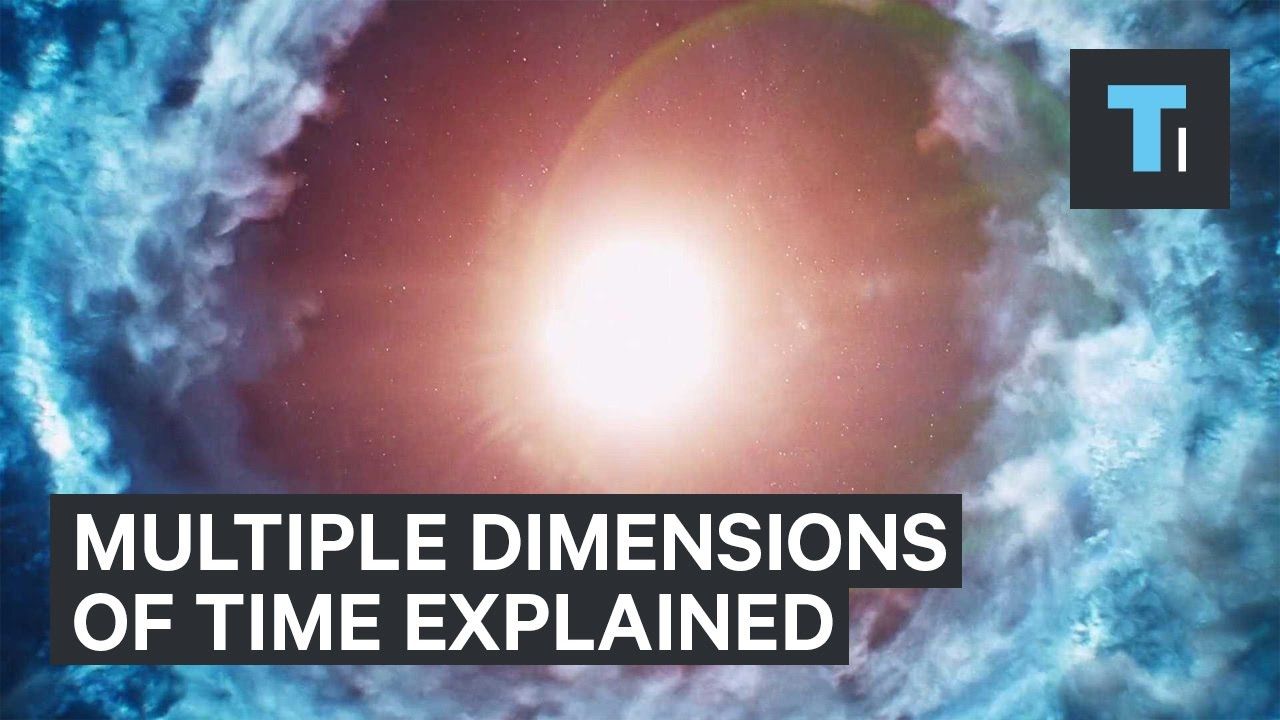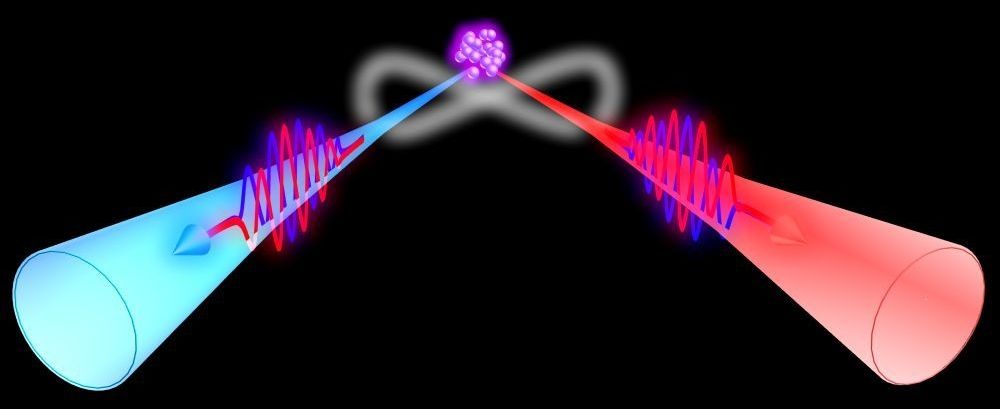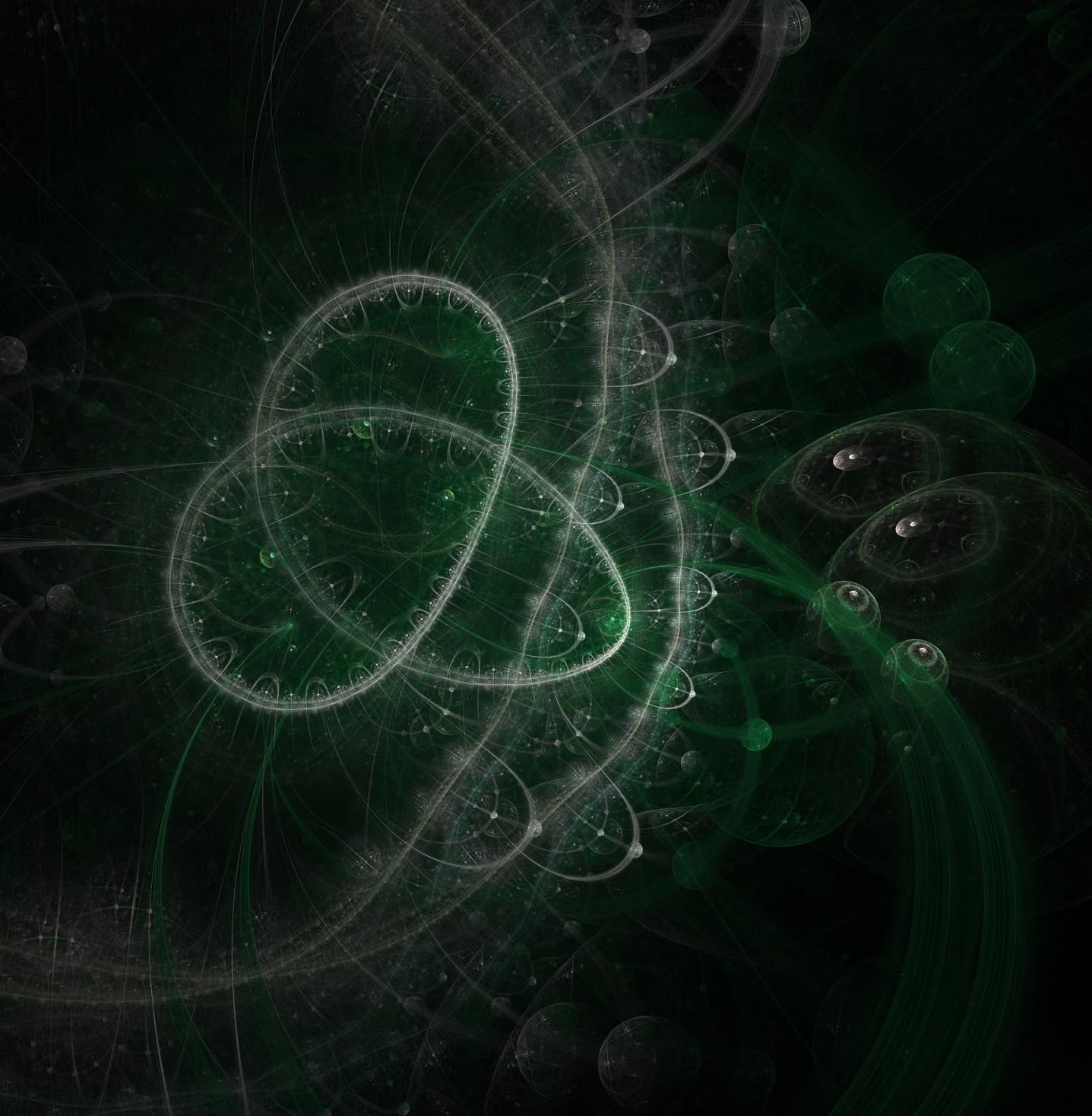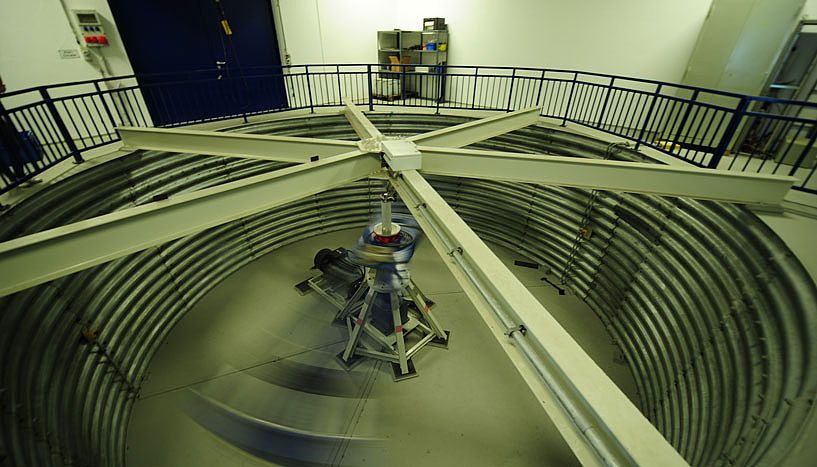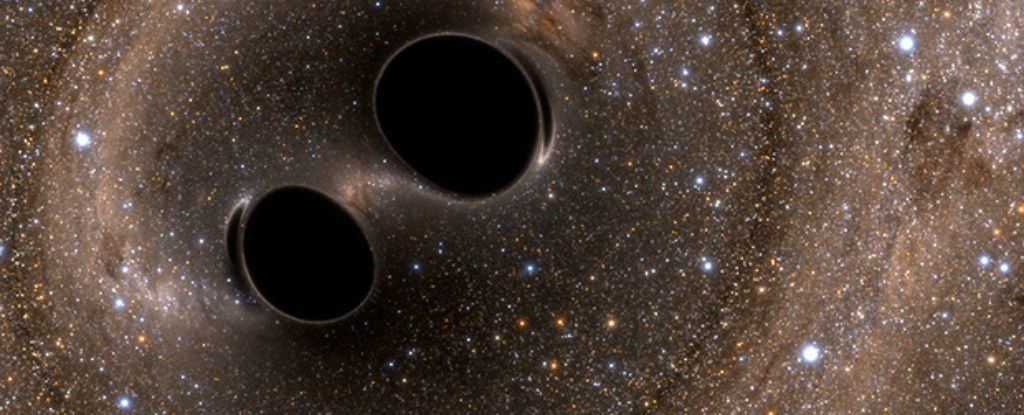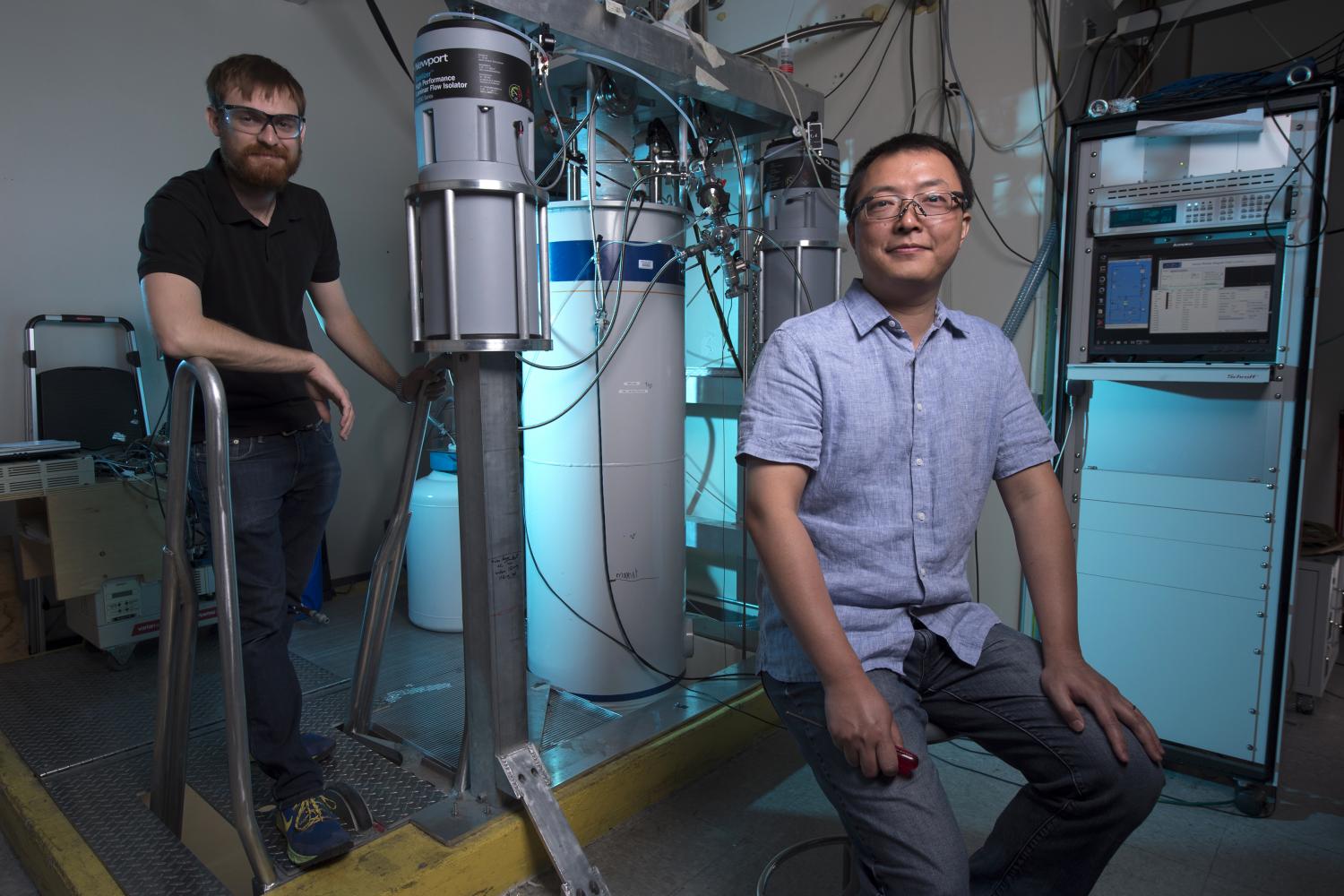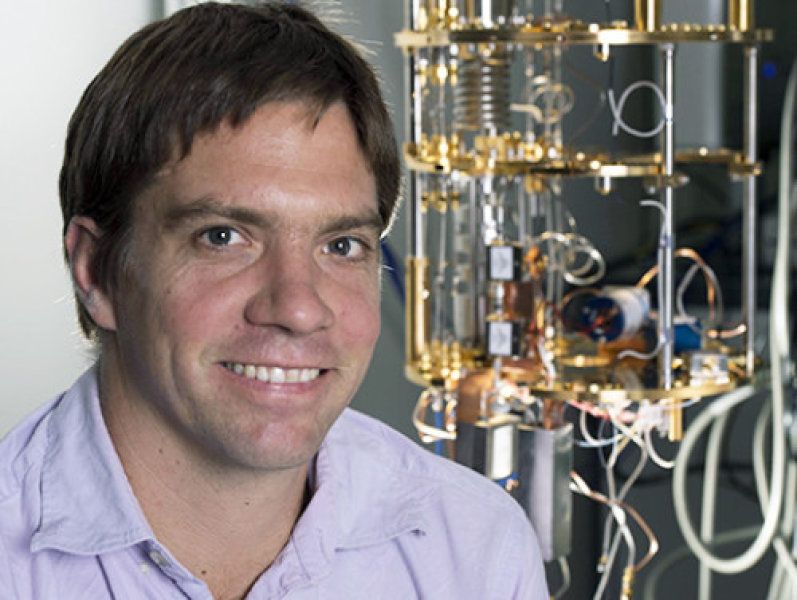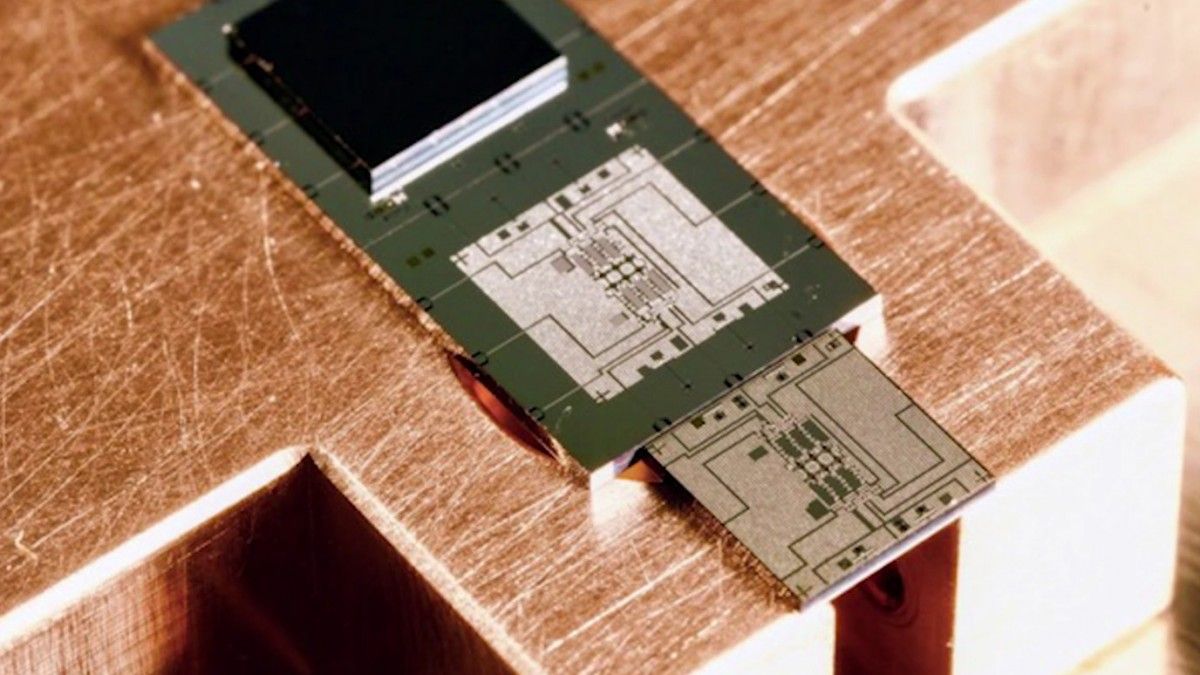Archive for the ‘quantum physics’ category: Page 716
May 10, 2017
Quantum Computing Demands a Whole New Kind of Programmer
Posted by Shailesh Prasad in categories: computing, quantum physics
Quantum computers finally seem to be coming of age with promises of “quantum supremacy” by the end of the year. But there’s a problem—very few people know how to work them.
The bold claim of achieving “quantum supremacy” came on the back of Google unveiling a new quantum chip design. The hyperbolic phrase essentially means building a quantum device that can perform a calculation impossible for any conventional computer.
In theory, quantum computers can crush conventional ones at important tasks like factoring large numbers. That’s because unlike normal computers, whose bits can either be represented as 0 or 1, a quantum bit—or “qubit”—can be simultaneously 0 and 1 thanks to a phenomenon known as superposition.
Continue reading “Quantum Computing Demands a Whole New Kind of Programmer” »
May 10, 2017
Researchers demonstrated violation of Bell’s inequality on frequency-bin entangled photon pairs
Posted by Shailesh Prasad in categories: particle physics, quantum physics
Quantum entanglement, one of the most intriguing features of multi-particle quantum systems, has become a fundamental building block in both quantum information processing and quantum computation. If two particles are entangled, no matter how far away they are separated, quantum mechanics predicts that measurement of one particle leads to instantaneous wave-function collapse of the other particle.
Such “spooky action at a distance” is non-intuitive, and in 1935, Einstein attempted to use entanglement to criticize quantum mechanics to suggest that the quantum description of physical reality is incomplete. Einstein believed that no information could travel faster than light, and suggested that there might be some local hidden variable theories that could explain the world in a deterministic way, if and only if they obey realism and locality. In 1964, J. S. Bell showed that the debate can be experimentally resolved by testing an inequality; by measuring correlations between entangled parties, the result calculated from local hidden variable theories should be constrained by the Bell inequality, which, on the other hand, can be violated in the predictions of quantum mechanics.
By reducing the velocity of light dramatically, researchers at the Hong Kong University of Science and Technology implemented a Bell Test and were able to generate frequency-bin entangled narrowband biphotons from spontaneous four-wave mixing (SFWM) in cold atoms with a double-path configuration, where the phase difference between the two spatial paths can be controlled independently and nonlocally.
May 10, 2017
Researchers achieve direct counterfactual quantum communication
Posted by Shailesh Prasad in categories: particle physics, quantum physics
(Phys.org)—In the non-intuitive quantum domain, the phenomenon of counterfactuality is defined as the transfer of a quantum state from one site to another without any quantum or classical particle transmitted between them. Counterfactuality requires a quantum channel between sites, which means that there exists a tiny probability that a quantum particle will cross the channel—in that event, the run of the system is discarded and a new one begins. It works because of the wave-particle duality that is fundamental to particle physics: Particles can be described by wave function alone.
Well understood as a workable scheme by physicists, theoretical aspects of counterfactual communication have appeared in journals, but until recently, there have been no practical demonstrations of the phenomenon. Now, a collaborative of Chinese scientists has designed and experimentally tested a counterfactual communication system that successfully transferred a monochrome bitmap from one location to another using a nested version of the quantum Zeno effect. They have reported their results in the Proceedings of the National Academy of Sciences.
The quantum Zeno effect occurs when an unstable quantum system is subjected to a series of weak measurements. Unstable particles can never decay while they are being measured, and the system is effectively frozen with a very high probability. This is one of the implications of the well known but highly non-intuitive principle that looking at something changes it in the quantum realm.
May 10, 2017
Unbreakable quantum entanglement
Posted by Andreas Matt in categories: particle physics, quantum physics, space
Einstein’s “spooky action at a distance” persists even at high accelerations, researchers of the Austrian Academy of Sciences and the University of Vienna were able to show in a new experiment. A source of entangled photon pairs was exposed to massive stress: The photons’ entanglement survived the drop in a fall tower as well as 30 times the Earth’s gravitational acceleration in a centrifuge. This was reported in the most recent issue of Nature Communications. The experiment helps deepen our understanding of quantum mechanics and at the same time gives valuable results for quantum experiments in space.
Einstein’s theory of relativity and the theory of quantum mechanics are two important pillars of modern physics. On the way of achieving a “Theory of Everything,” these two theories have to be unified. This has not been achieved as of today, since phenomena of both theories can hardly be observed simultaneously. A typical example of a quantum mechanical phenomenon is entanglement: This means that the measurement of one of a pair of light particles, so-called photons, defines the state of the other particle immediately, regardless of their separation. High accelerations on the other hand can best be described by the theory of relativity. Now for the first time, quantum technologies enable us to observe these phenomena at once: The stability of quantum mechanical entanglement of photon pairs can be tested while the photons undergo relativistically relevant acceleration.
May 8, 2017
Gravitational Waves Could Be The Key to Discovering Extra Dimensions in Our Universe
Posted by Andreas Matt in category: quantum physics
If we want to find extra dimensions lurking within our Universe — something that string theory attempts to explain — gravitational waves could be our key to locating them, physicists suggest.
This new hypothesis seeks to answer the long-standing mystery of why gravity appears to be weaker than the other fundamental forces in our Universe, by proposing that it’s actually ‘leaking out’ into extra dimensions we’re yet to detect.
“Extra dimensions have been discussed for a long time from different points of view,” Emilian Dudas from the École Polytechnique in France, who wasn’t involved in the study, told Leah Crane at New Scientist.
May 3, 2017
Physicists design 2-D materials that conduct electricity at almost the speed of light
Posted by Shailesh Prasad in categories: computing, particle physics, quantum physics
Physicists at the University of California, Irvine and elsewhere have fabricated new two-dimensional quantum materials with breakthrough electrical and magnetic attributes that could make them building blocks of future quantum computers and other advanced electronics.
In three separate studies appearing this month in Nature, Science Advances and Nature Materials, UCI researchers and colleagues from UC Berkeley, Lawrence Berkeley National Laboratory, Princeton University, Fudan University and the University of Maryland explored the physics behind the 2-D states of novel materials and determined they could push computers to new heights of speed and power.
The common threads running through the papers are that the research is conducted at extremely cold temperatures and that the signal carriers in all three studies are not electrons — as with traditional silicon-based technologies — but Dirac or Majorana fermions, particles without mass that move at nearly the speed of light.
Apr 30, 2017
These New Quantum Materials Can Conduct Electricity at Nearly the Speed of Light
Posted by Dan Kummer in categories: computing, quantum physics
Physicists have been testing the properties of new 2D quantum materials that could usurp graphene as the ‘wonder materials’ of the future.
These materials, which can conduct electricity at nearly the speed of light, could replace silicon in the next generation of hyper-speed computers. One could even form the basis of a new “exotic superconductor” that could actually break time-reversal symmetry — or reverse the flow of time.
“Finally, we can take exotic, high-end theories in physics and make something useful,” says one of the researchers, Jing Xia, from the University of California, Irvine.
Apr 28, 2017
Hindsight and foresight together more accurately ‘predict’ a quantum system’s state
Posted by Shailesh Prasad in category: quantum physics
We’re so used to murder mysteries that we don’t even notice how mystery authors play with time. Typically the murder occurs well before the midpoint of the book, but there is an information blackout at that point and the reader learns what happened then only on the last page.
If the last page were ripped out of the book, physicist Kater Murch, PhD, said, would the reader be better off guessing what happened by reading only up to the fatal incident or by reading the entire book?
The answer, so obvious in the case of the murder mystery, is less so in world of quantum mechanics, where indeterminacy is fundamental rather than contrived for our reading pleasure.
